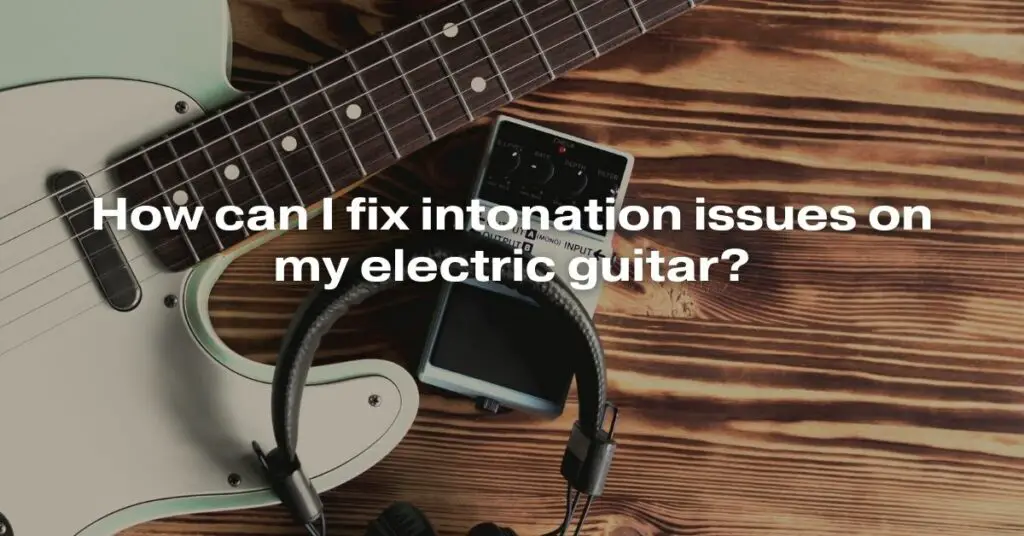Playing the electric guitar can be an incredibly rewarding experience, but sometimes, even the most skilled players encounter problems with their instruments. One common issue faced by guitarists is poor intonation, which can significantly affect the sound quality and playability of the instrument. In this comprehensive guide, we will explore the reasons behind intonation problems and provide you with step-by-step solutions to fix intonation issues on your electric guitar.
Understanding Guitar Intonation
Before diving into the solutions, it’s essential to understand what intonation means in the context of a guitar. Intonation refers to the accuracy of the pitch produced by each fret along the neck. When a guitar is properly intonated, the pitch of each fretted note matches the pitch of the open string. Intonation problems occur when the fretted notes are sharp or flat compared to the open strings.
Common Causes of Intonation Problems
- Incorrect Bridge Positioning: If the bridge saddles are not positioned correctly, it can lead to intonation problems. Each saddle must be adjusted precisely for accurate intonation.
- Worn Out Strings: Over time, guitar strings can wear out and lose their intonation. Regularly changing strings is crucial to maintain good intonation.
- Neck Issues: Problems with the guitar neck, such as a bow or a warp, can affect intonation. A straight neck is essential for accurate pitch across the fretboard.
- Inadequate Nut Slotting: If the slots in the guitar nut are not properly cut, it can cause sharp or flat notes, especially in the lower frets.
Steps to Fix Intonation Issues
- Tune Your Guitar: Before adjusting the intonation, make sure your guitar is tuned to the correct pitch using a reliable electronic tuner.
- Check Neck Relief: Use a straightedge to check the neck’s curvature. If there’s a noticeable bow or warp, consult a professional guitar technician to address the issue.
- Adjust Bridge Saddle Position: Using a screwdriver or an appropriate tool, adjust the saddle position for each string. If a fretted note is sharp, move the saddle away from the neck. If it’s flat, move the saddle towards the neck. Make small adjustments and retune the string after each change.
- Check Nut Slots: If you find intonation problems in the lower frets, the nut slots might be the culprit. Ensure that the nut slots are properly cut to accommodate the strings’ gauge. If necessary, consult a luthier to reshape the nut.
- Evaluate String Quality: Poor-quality or worn-out strings can never intonate perfectly. Replace old strings with high-quality ones, and regularly change them to maintain optimal intonation.
- Professional Setup: If you find it challenging to fix the intonation issues on your own, consider taking your guitar to a professional luthier or guitar technician. They have the expertise and tools to diagnose and rectify complex intonation problems.
Conclusion
Proper intonation is vital for achieving a clear, in-tune sound on your electric guitar. By understanding the causes of intonation issues and following the steps outlined in this guide, you can significantly improve your guitar’s playability and sound quality. Remember, patience is key when it comes to adjusting the intonation, so take your time and make small, precise adjustments until you achieve the perfect balance of pitch across the fretboard. With the right knowledge and care, you can enjoy playing your electric guitar with accurate intonation for years to come.


